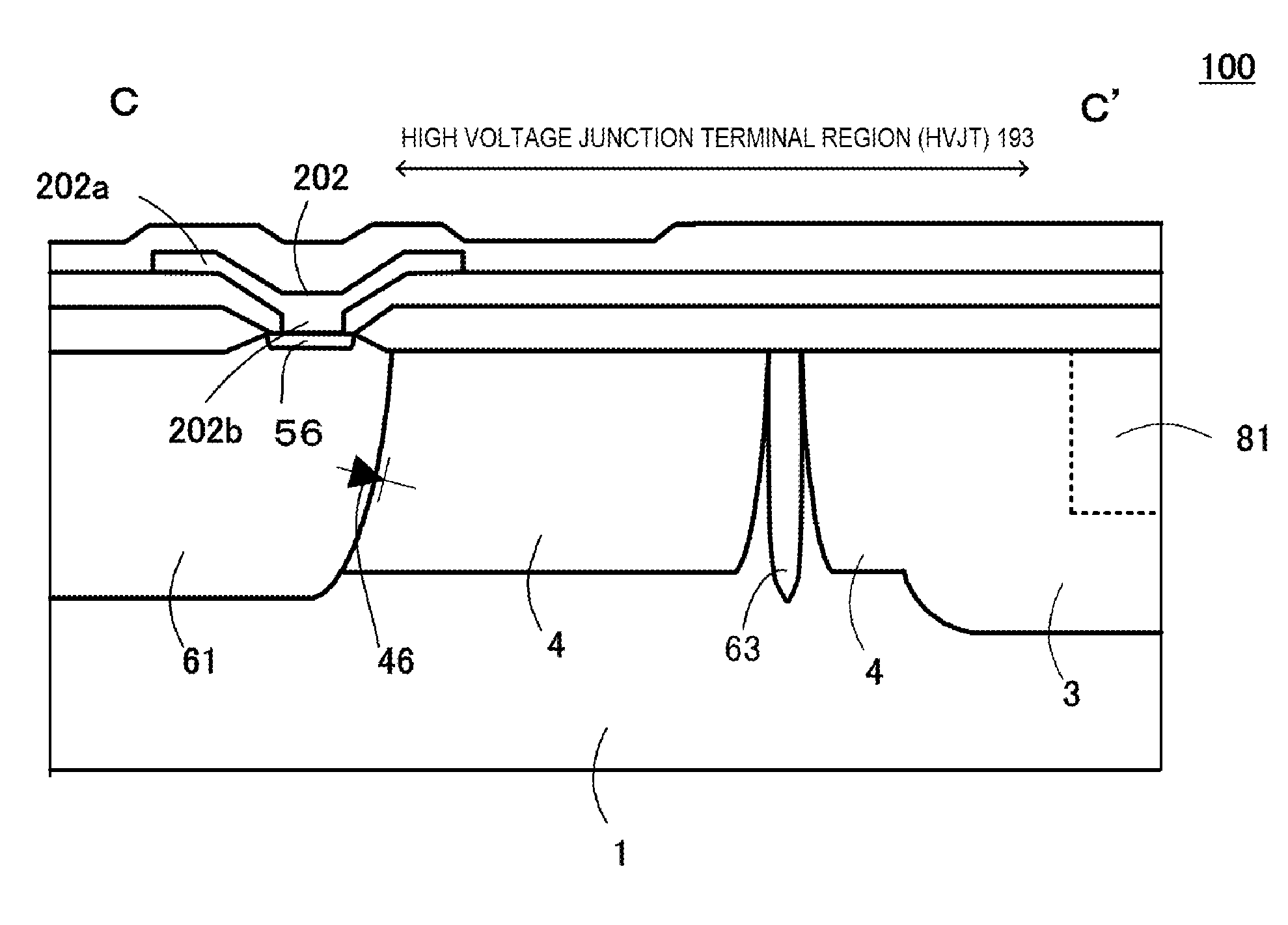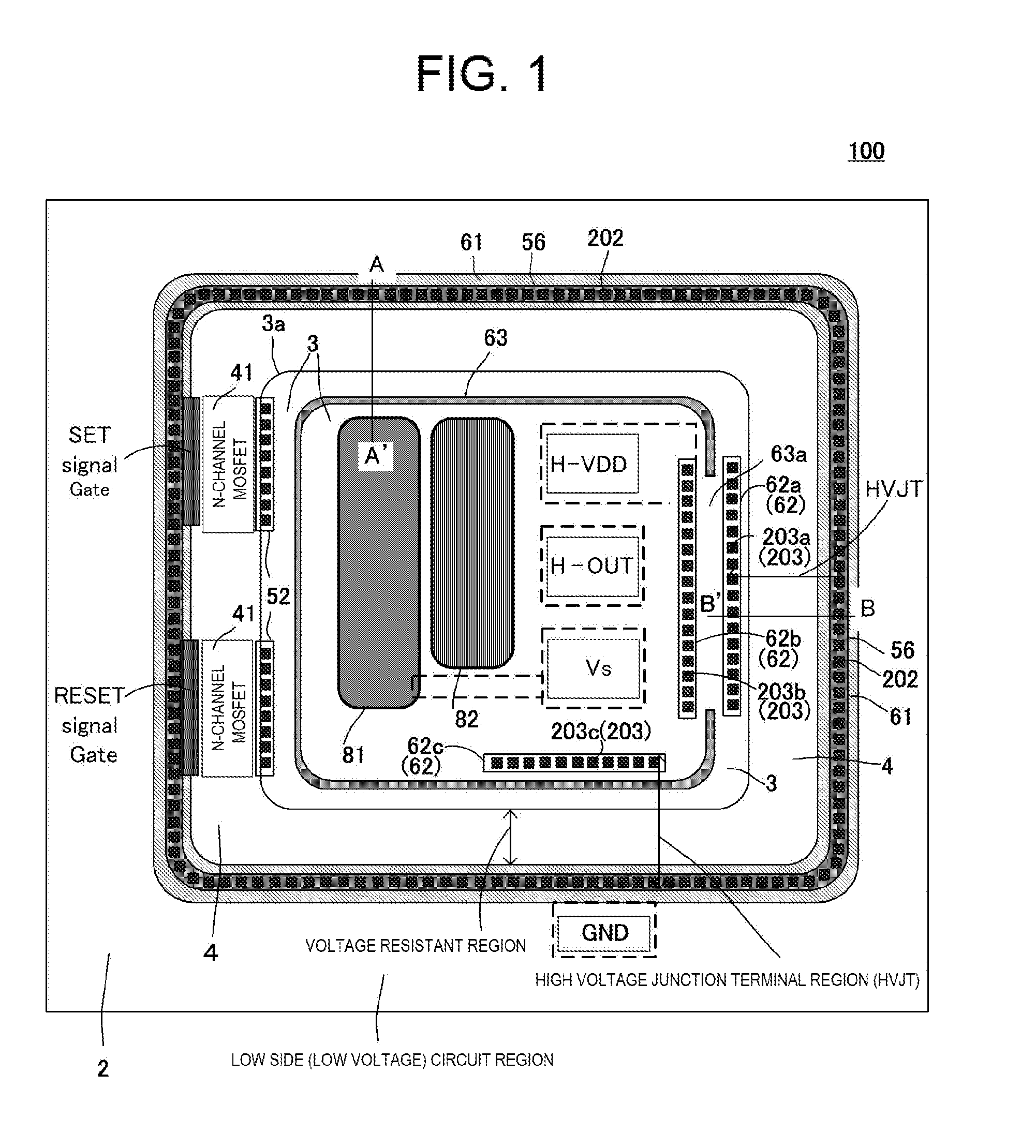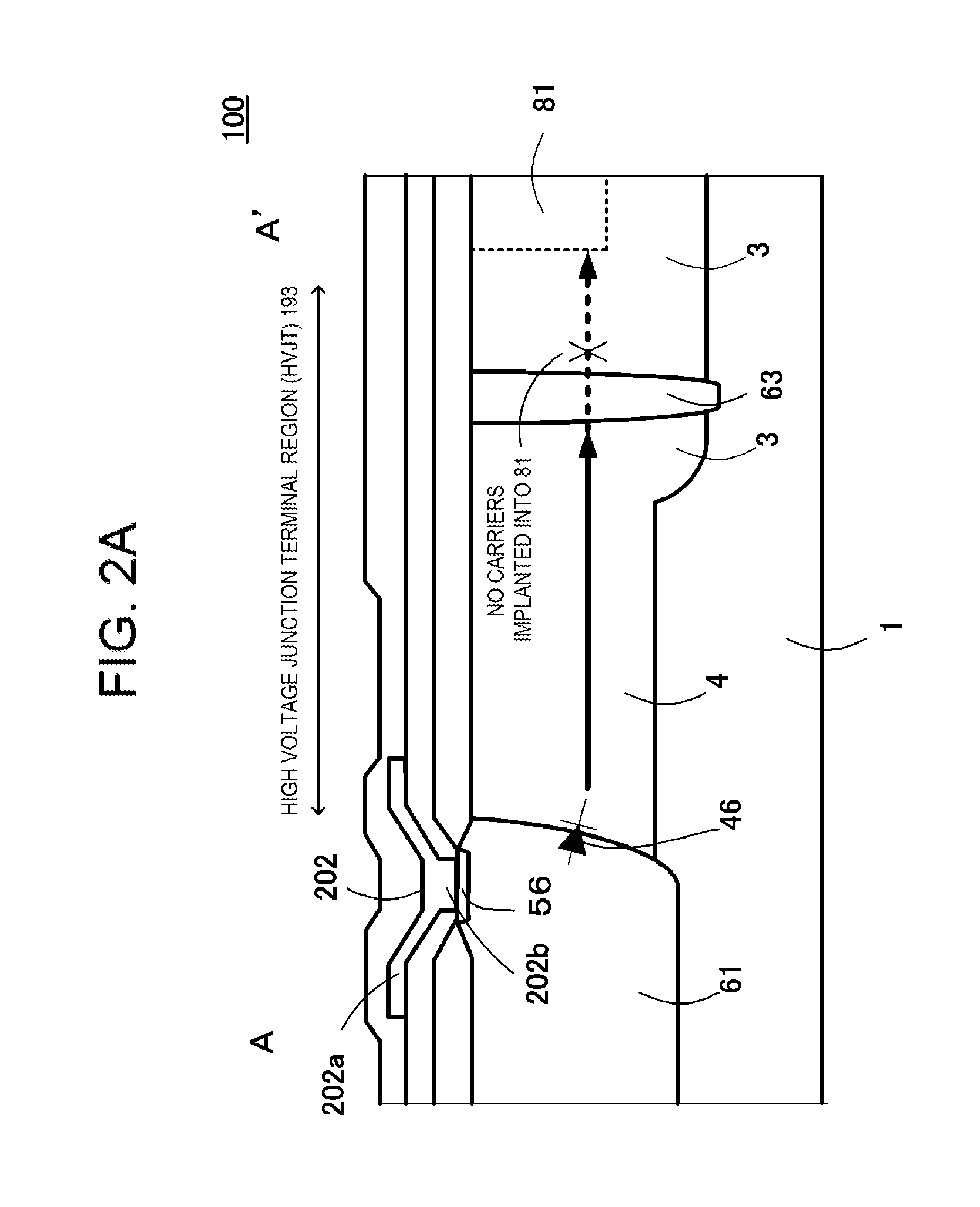High voltage integrated circuit device
a high-voltage integrated circuit and integrated circuit technology, applied in the field of high-voltage integrated circuit devices, can solve problems such as malfunction and destruction of /b>, and achieve the effects of preventing false signal transmission of high-side logic, and preventing the implantation of excessive hole curren
- Summary
- Abstract
- Description
- Claims
- Application Information
AI Technical Summary
Benefits of technology
Problems solved by technology
Method used
Image
Examples
embodiment 1
[0076]FIGS. 1 and 2A and 2B are configuration diagrams of a high voltage integrated circuit device 100 of a first embodiment according to the invention, FIG. 1 being a main portion plan view and FIGS. 2A and 2B being main portion sectional views of FIG. 1, wherein FIG. 2A is a main portion sectional view cut along an A-A′ line of FIG. 1, and FIG. 2B is a main portion sectional view cut along a B-B′ line of FIG. 1.
[0077]The high voltage integrated circuit device 100 includes an n-type well region 3, which is a high potential region formed in a surface layer of a p-type substrate 1 (semiconductor layer), and an n−-type well region 4, which is a voltage-resistant region of an impurity concentration lower than that of the n-type well region 3, in contact with the n-type well region 3 in the surface layer of the p-type substrate 1 and formed around the outer periphery of the n-type well region 3.
[0078]Also, the high voltage integrated circuit device 100 includes a p-type common potential...
embodiment 2
[0112]FIG. 4 is a main portion plan view of a high voltage integrated circuit device 200 of a second embodiment of the invention. FIG. 4 differs from FIG. 1 in that the p−-type aperture portion 63 having the gap portion 63a is disposed inside the n−-type well region 4, which is a voltage resistant region, and one second high concentration region 62 is disposed in the end portion of the n-type well region 3, which is a high potential region.
[0113]The width of the p−-type aperture portion 63 is such that breakdown voltage characteristics are not lost even when the H-VDD terminal (pad) leaps to a high potential of in the region of 600V. In order to achieve this, the width of the p−-type aperture portion 63 is set to the width for which depletion layers extending from the n-type well region 3 to the p−-type aperture portion 63 are in contact, so that the p−-type aperture portion 63 is depleted. Herein, the width of the p−-type aperture portion 63 is a width in the region of 10 to 20 μm....
embodiment 3
[0115]FIGS. 13 and 14A and 14B are configuration diagrams of a high voltage integrated circuit device 200a of a third embodiment according to the invention, wherein FIG. 13 is a main portion plan view and FIGS. 14A and 14B are main portion sectional views cut along a C-C′ line and D-D′ line of FIG. 13.
[0116]FIGS. 13 and 14A and 14B differ from FIG. 4 in that the second high concentration region 62 of the n−-type well region 4, which is a voltage resistant region, is formed in the vicinity of the boundary with the n-type well region 3, which is a high potential region. The HVJT 193 in this place is a region formed of the second high concentration region 62, the n−-type well region 4, which is a voltage resistant region, the p-type common potential region 61, and the first high concentration region 56. When an n-type offset region 80 is formed so as to envelop the second high concentration region 62, a drop in breakdown voltage can be suppressed. It is good when the impurity concentra...
PUM
 Login to View More
Login to View More Abstract
Description
Claims
Application Information
 Login to View More
Login to View More - R&D
- Intellectual Property
- Life Sciences
- Materials
- Tech Scout
- Unparalleled Data Quality
- Higher Quality Content
- 60% Fewer Hallucinations
Browse by: Latest US Patents, China's latest patents, Technical Efficacy Thesaurus, Application Domain, Technology Topic, Popular Technical Reports.
© 2025 PatSnap. All rights reserved.Legal|Privacy policy|Modern Slavery Act Transparency Statement|Sitemap|About US| Contact US: help@patsnap.com



